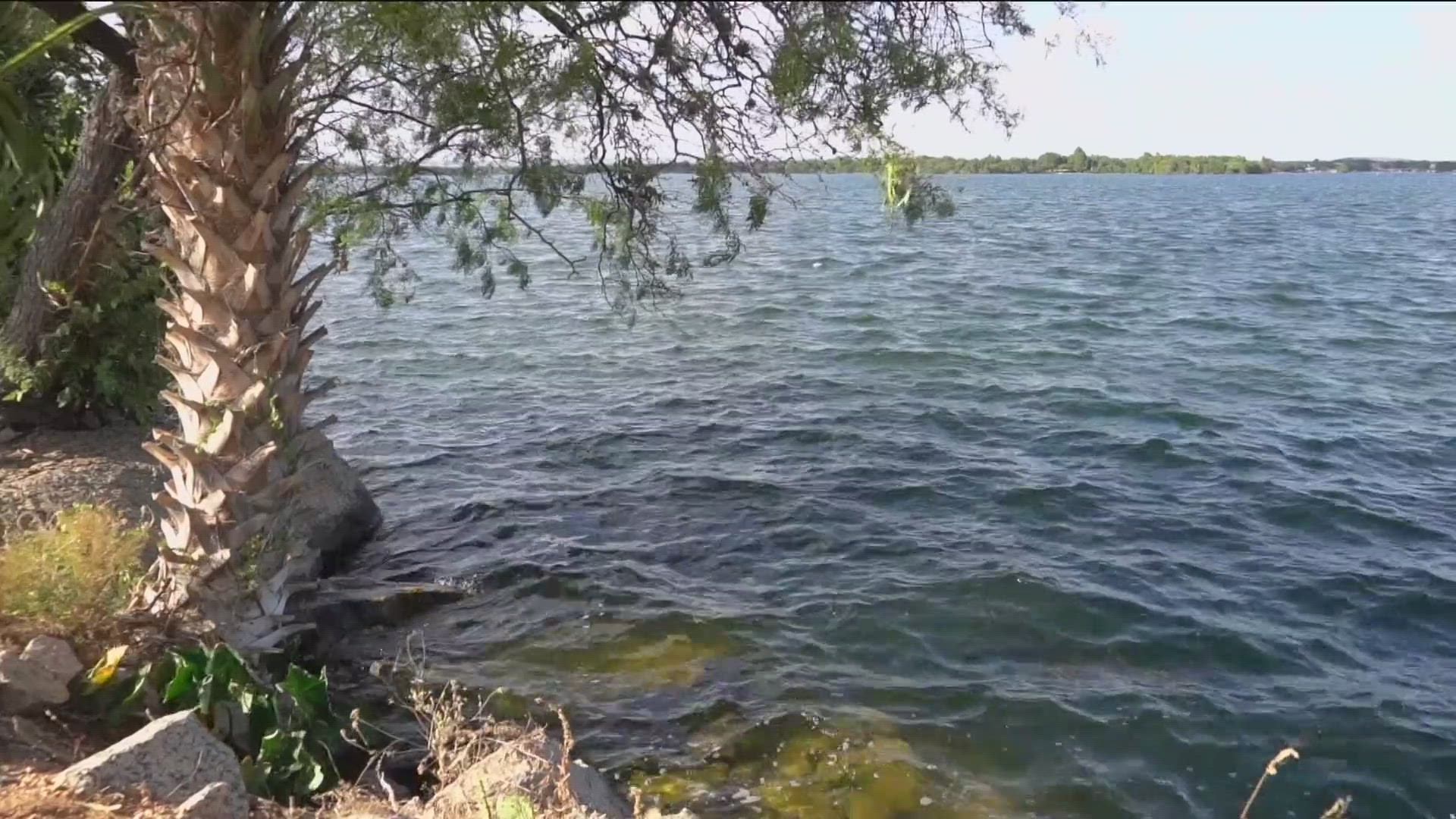AUSTIN, Texas — A Travis County resident has died after developing an illness caused by an amebic meningitis infection, Austin Public Health (APH) announced on Wednesday.
The public health agency said the person became ill after swimming in Lake LBJ in August.
"Although these infections are very rare, this is an important reminder that there are microbes present in natural bodies of water that can pose risks of infection,” Austin-Travis County Health Authority Dr. Desmar Walkes said. “Increased temperatures over the summer make it ideal for harmful microorganisms to grow and flourish."
APH said amebic meningitis doesn't occur if water is swallowed, but it can be fatal if forced up the nose – something that can happen when jumping into water, diving, water-skiing or doing other water activities.
"At the top of the nasal passage, there is a way that this amoeba can enter into the brain tissue in the olfactory bulb area. And so, when water's force forcefully pushed into the nose, it can enter in that fashion," Walkes said.
The amoeba isn't found in salt water or in properly maintained and chlorinated pools.
Clara Tuma with the Lower Colorado River Authority (LCRA) said Lake LBJ and other Highland Lakes remain open to recreation but said lakes may contain harmful amoeba or bacteria. She advised people to take precaution and guard their noses if in the water.
The LCRA added that although officials conduct water quality testing on the Highland Lakes, they don't monitor for the amoeba that can cause amebic meningitis since. According to the Center for Disease Control and Prevention (CDC), there is no routine or rapid test for the infection.
"The CDC recommends that recreational water users always assume there is a risk for infection," Tuma said.
Amebic meningitis, also known as primary amebic meningoencephalitis (PAM), is usually deadly. According to the CDC, there are only five known people in North America who have recovered.
Lara Anton with the Texas Department of State Health Services said the department sees less than one case a year.
"It's definitely serious because once it's in your brain, there's no way to get it out of your brain," Anton said.
APH said PAM infections are rare, and there have only been 39 known infected individuals in Texas between 1962 and 2022.
The infections can cause severe illness up to nine days after exposure. The CDC said after the start of symptoms, the disease usually causes death within about five days.
Symptoms of an amebic meningitis infection, which is an infection of the brain, start with severe headache, fever, nausea and vomiting. They then progress to stiff neck, seizure sand coma and can lead to death. APH said these infections usually occur when it is hot for prolonged periods of time, resulting in higher water temperatures and lower water levels.
APH said to reduce the risks associated with swimming in natural bodies of water, including amebic infections, swimmers should:
- Limit the amount of water going up their nose by either holding their nose shut, using nose clips or keeping their heads above water
- Avoid water-related activities in warm freshwater during periods of high water temperature and low water levels
- Avoid digging in or stirring up the sediment
APH has sent a sample specimen from the Lake LBJ case to the CDC for further identification.

